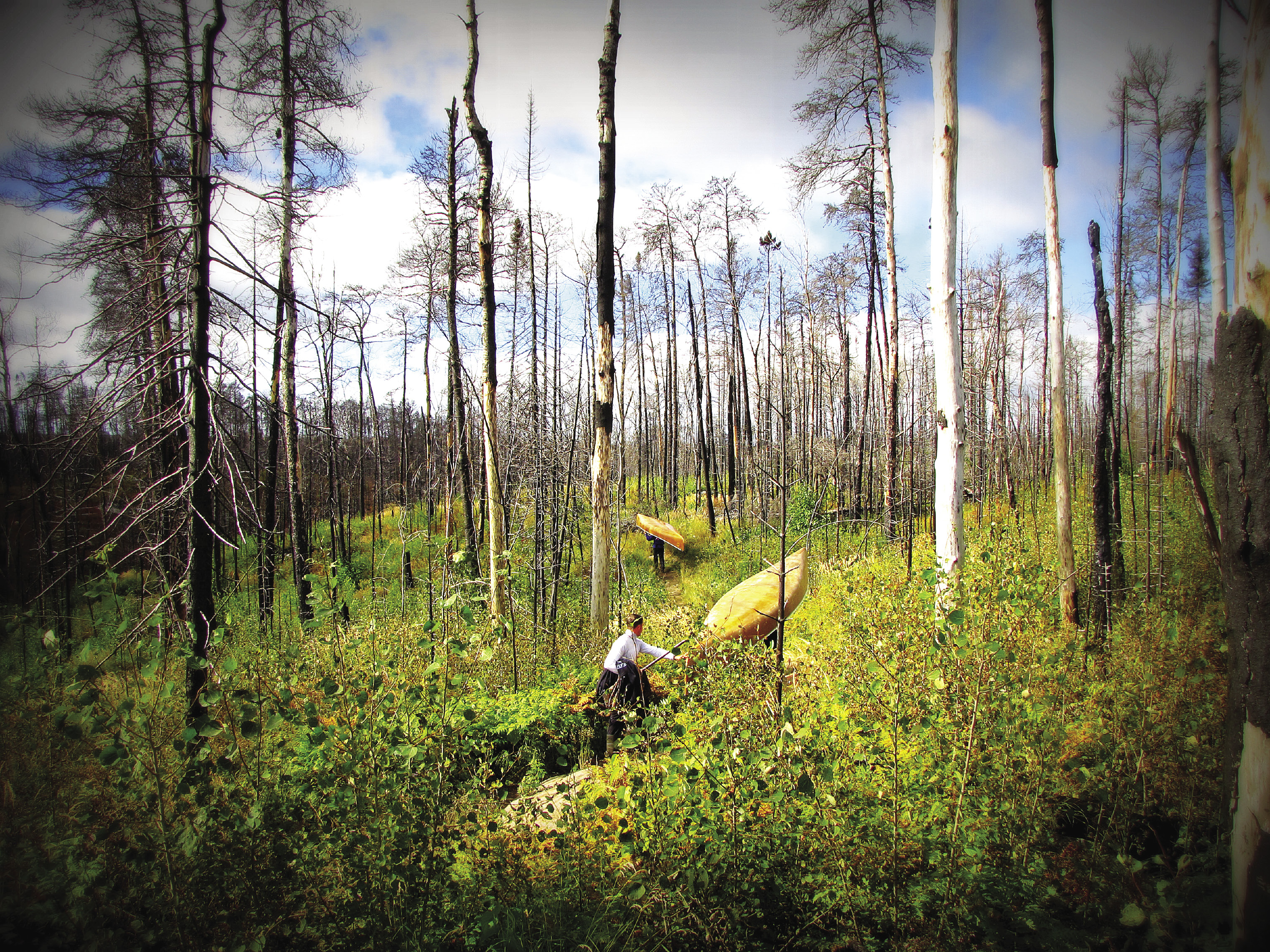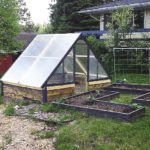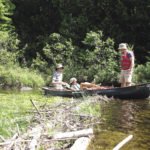It’s finally happening: your first trip to the Boundary Waters Canoe Area Wilderness (BWCAW).
You’ve secured the trip with a permit from the U. S. Forest Service. The adventure will launch from the entry point you spent hours researching and concluded was the ideal route. With a crisp map of the area in hand, you and the other members of your party prepare to work out the details of the trip. However, much to your surprise and halting your enthusiasm, the portage trails are long and apparently not marked by signs. Furthermore, you have no idea what a “rod” is when it comes to describing the distance between lakes. Suddenly, you feel overmatched and confused. And worst of all, the map is covered with a barrage of red dots decorating the terrain. You think the dots indicate campsites, but how do you know which one to choose? Like many aspects of planning a trip to the BWCAW, selecting a campsite can be overwhelming if you don’t break it down into its simplest form.
“Nothing on any map is going to indicate a good or bad campsite,” said Andy McDonnell, the co-owner of Tuscarora Lodge and Canoe Outfitters, located up the Gunflint Trail. “The best way to find good campsites is to explore the lake you’re camping on, do some online research, or talk to an outfitter or someone who has been there before.”
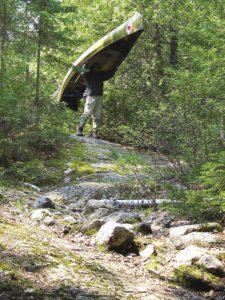
Indeed the complexities of planning that first trip to the BWCAW or Quetico Provincial Park—or even your 100th trip—can lead to an entanglement of emotions and even frustrations if not done properly. The beauty of that sentiment is that “properly” can be 1,000 different things depending on the individual or the group heading out to enjoy the wilderness in canoe country. Some enjoy establishing a base camp and doing lighter adventures from there. Others prefer a loop-style adventure or a through route, never covering the same ground twice. Some trips involve a dozen or more portages. Some have just one. There are no hard-and-fast rules.
“It’s important to set realistic goals on a canoe trip,” said Mike Seim, a co-owner of Rockwood Lodge and Canoe Outfitters. “Don’t try to cover a five-day route in three. Accept the fact your feet are going to get wet. Bring enough food and don’t rely on catching fish or you could jinx your luck and go hungry.”
Realistic goals go hand-in-hand with preparation. And make no mistake, planning a trip can be the key to its ultimate success. For many people, planning a trip is considered part of the fun.
Quinn McCloughan from Bearskin Outfitters up the Gunflint Trail said while planning a trip to the BWCAW is indeed part of the experience, flexibility in the proposed ‘plan’ is equally as important.
“It’s important to leave room for adventure and discovery. There is so much access to information that people can start their trip knowing exactly what they’ll find at every campsite, lake, and portage,” McCloughan said. “And while knowing what to expect can increase your enjoyment of a trip, it also can lead to situations where people are so focused on a single destination they pay little attention to everything found along the way. And you will never enjoy a great campsite more than when it’s unexpected.”
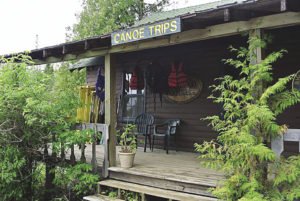
McCloughan said it’s a delicate balance between knowing too much and too little while preparing for your canoe trip.
“For safety’s sake it’s better to err on the side of more information,” he added. “But leave room for the ability to make decisions in the moment on the trail.”
Cliff Jacobson is a Wisconsin-based outdoors writer and a wilderness guide. He is also the author of more than a dozen top-selling books on camping and canoeing. When it comes to traveling in the Boundary Waters, Jacobson said it’s best to plan for rain and pack efficiently.
“Pack everything in waterproof bags,” he said. “The best way is to line each big tripping pack with two heavy duty leaf-and-lawn-sized plastic bags. Except for fishing gear and immediate needs, everything should be stuffed into packs. And everything for a one week trip should fit into three large portage packs.”
Indeed weather and other factors, such as weekend crowds, are difficult to control from the recreationist standpoint. And while certain variables are beyond control, when it comes to rain in the spring, summer or fall, Jacobson said there are ways to combat the curveball Mother Nature could toss your way.
“Bring a generously sized tarp for rain and one or two poles for rigging,” he said. “They’re not heavy and a tarp provides a dry place to chat and cook in the rain.”
Though rigging a tarp isn’t exactly scientific by design, there are products and gear that can improve the overall quality of a trip. Durable, waterproof boots are key for getting in and out of a canoe and slogging through a muddy portage. The right water filter is important as well, and most outfitters suggest a gravity filter these days. A gravity filter involves collecting water in one bag, hanging it accordingly so the water drops down to another bag while passing through a filter along the way. The more traditional means of filtering water involves using a hand-pump system, and again it often depends on the individual.
“Gravity filters are great, but because our trips always involve long travel days I personally prefer a pump filter, since you can filter water on the move,” McCloughan said. “Regardless, I wouldn’t recommend any filter that can’t be cleaned during your trip.”
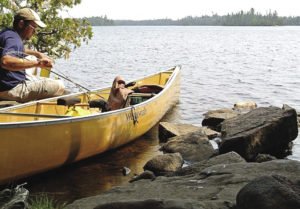
Other factors to consider on a canoe trip include what type of canoe to travel in, how much food to bring and how far to travel. The vast majority of canoeists recreating in the BWCAW do so in a Kevlar canoe as opposed to an aluminum or plastic model. Generally, Kevlar canoes are faster in the water, as well as lighter and therefore easier to portage. When it comes to food, freeze-dried meals are light and fairly easy to prepare at camp. If you’re fishing and plan to eat your catch, Seim from Rockwood said “don’t forget the Shore Lunch and oil.” And when it comes to how far to travel during the course of a trip, it all goes back to staying flexible with the group’s agenda.
And while there have been a variety of advancements in the camping industry—lighter canoes, stronger tents, warming sleeping bags, improved rain gear, etc.—the core concepts of traveling in the Boundary Waters region remain the same: paddle a canoe from point A to point B and do whatever brings you joy in the process. Planning the adventure is indeed a part of the process, as is the ability to handle and enjoy whatever nature offers.
“Psychologically, we see a fair amount of people who put their canoe trip on a pedestal; where they start their trip dependent on circumstances out their control, hoping to create a great canoe trip,” said Ada Igoe, co-owner of Tuscarora. “These folks want perfect weather, great fishing, easy navigation, no crowds, all trip mates to get along at all times and amazing campsites. Part of taking a wilderness camping trip is accepting that many aspects of the trip are out of your control. A good, adaptable attitude is absolutely the most important thing you can bring on a canoe trip.”


